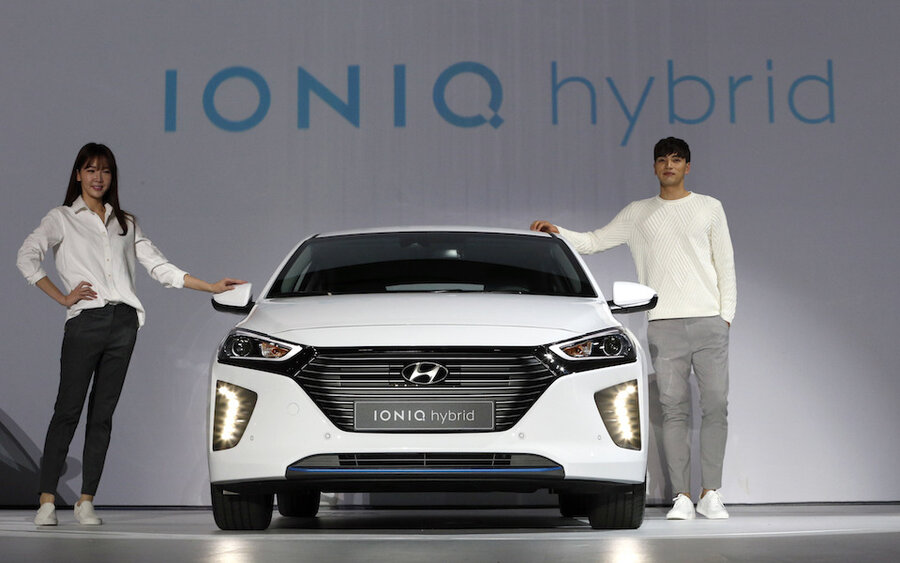2017 Hyundai Ioniq comes in hybrid, plugin hybrid, or electric
Loading...
Hyundai this year will be the first major automaker with a vehicle offering hybrid, plug-in hybrid and pure electric options when it launches its 2017 Ioniq. The Chevrolet Volt and Toyota Prius rival isn’t scheduled for an official debut until March’s 2016 Geneva Motor Show but Hyundai has already revealed the design and now much of the specs, too.
The Ioniq rides on a dedicated platform designed not only to offer a variety of alternative powertrains but also be lightweight and fun to drive. This was achieved via the extensive use of aluminum and high-strength steels, and the car also sports sophisticated multi-link suspension at the rear. The engineers have also focused on reducing weight in the upper portions of the vehicle to lower the center of gravity.
But what about the powertrains? The hybrid and plug-in hybrid models come with a dedicated 1.6-liter four-cylinder engine for their internal combustion component. The Atkinson cycle engine features direct fuel injection and works together with a single electric motor. Powering the electric motor and storing recovered energy is a lithium-ion polymer battery.
Peak output of the system is 139 horsepower and 195 pound-feet of torque and drive is sent to the front wheels via a hybrid-specific six-speed dual-clutch automatic transmission that even has a Sport mode that holds gears for longer and uses maximum performance from the engine and electric motor. There’s no boring CVT here. Unfortunately, we still don’t have specs on battery capacity or vehicle range, although we do know the electric motor can power the Ioniq on its own up to 75 mph.
Details on the pure electric version will be announced closer to the market launch later this year. What we do know is there will be subtle visual clues differentiating the models, for example wheel sizes.
In designing the exterior of the Ioniq, Hyundai has gone with a simple, elegant look as opposed to the somewhat fussy look Toyota employed for its latest Prius. There's a reason for this. The simple, carefully wrought contours are said to minimize wind resistance and assist the efficient movement of air around the body. The coefficient of drag is a very low 0.24, making the Ioniq one of the most aerodynamic cars on the market. We’re told the exterior panels are designed to flex to boost aerodynamic efficiency.
Inside, the smooth, elegant and clutter-free theme continues and much of the surfaces are formed from recycled materials. There are still plenty of convenience features including a memory function driver’s seat; heated seats all around; a split-folding function for the seats; a 7.0-inch screen in the instrument cluster; a wireless charging pad; and Apple CarPlay and Android Auto smartphone integration.
Safety measures include seven airbags and a host of electric driver aids such as blind spot, lane departure and cross traffic warning systems; autonomous braking; and adaptive cruise control that maintains a safe gap with other vehicles. A tire pressure monitoring system is also included.
Note, these specs are for the global version of the Hyundai Ioniq. Specs for the United States will be announced at the car's local debut taking place during April's 2016 New York Auto Show.





